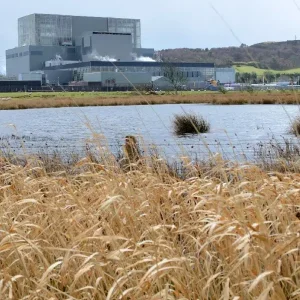According to the report by Zion Market Research, the global solar panel market is expected to touch 57.3bn by 2022, growing at a compounded annual growth rate (CAGR) of 10.9% between 2017 and 2022. The report said that the technological advancements along with the commercialization of solar panel have been driving the growth of the market.
Currently, most of the solar modules are manufactured from crystalline silicon (c-Si) solar cells made of multicrystalline and monocrystalline silicon. Chinese companies continue to occupy a major share in the global production of photovoltaic (PV) modules. While a significant number of global solar modules manufactures are located in Asia, other regions have also started seeing an increase in the production volumes with the entry of new players. Some of the major global solar panel manufacturers include Jinko Solar, Yingli Solar, Trina Solar, JA Solar Holdings Canadian Solar and Hanwha Q CELLS.
Here are the different types of solar panels:
Monocrystalline solar panels: To produce higher performance rates compared to other types of panels, the monocrystalline panels are made from quality silicon. The panels are known for efficient usage of space and produce high output per square foot. However, one of the major disadvantages of this type of solar panels is high cost. Besides, their production results in the release of huge amounts of waste. Manufactured by growing a single crystal, monocrystalline solar panels can be cut into various patterns. They are well suited for warm weather conditions. In November 2017, JinkoSolar had announced that its monocrystalline Passivated Emitter and Rear Contact (PERC) solar cell achieved an energy efficiency of 23.45%. It was validated by the Chinese Academy of Sciences’ Photovoltaic and Wind Power System Quality Test Center. Similarly, LONGi Green Energy Technology announced photovoltaic conversion efficiency of 22.71% for its monocrystalline PERC cell in October.

Image: Solar panels arranged in an array. Photo: Courtesy of Naypong/FreeDigitalPhotos.net.
Polycrystalline solar panels: Though polycrystalline solar panels are also made from silicon, manufacturing of this type of panels involves pouring of molten silicon into a cast. The process involved in the manufacture of these panels creates boundaries that highlight where exactly the crystal formation breaks. Due to the presence of impurities in the crystal, the panels are considered to be less efficient compared to monocrystalline. The production of polycrystalline panels release low amount of waste and involves consumption of less raw materials and energy. However, this type of panels occupies more space compared to monocrystalline.

Image: In 2015, the UK proposed to cut reduce subsidies for solar and biomass project. Photo: Courtesy of Andrew Beierle/Freeimages.com.
Thin film solar panels: Produced by arranging photovoltaic element in layers, thins film solar panels can work in low sunlight conditions. The most commonly used photovoltaic elements to manufacture thin film solar panels include amorphous silicon, cadmium telluride, copper indium gallium selenide and organic photovoltaic cells. However, the lightweight panels offer low performance rates and occupy a lot of space. The costs involved in the installation of thin film solar panels are found to be high, as their installation increases the size of the related equipment. The panels are considered to be suitable for low capacity installations.
In September 2016, Solar Frontier signed a memorandum of understanding (MoU) with oil company Saudi Aramco and the Saudi Arabian National Industrial Cluster Development Programme to investigate the potential of producing CIS thin-filmed solar panels in the Kingdom. They are considered to be well suited for the high temperature and dry conditions. Besides, they can offer higher output in comparison with regular PV modules and other thin film PV modules such as cadmium tellurite.

Image: Thin-film PV array of CdTe solar modules manufactured by U.S. company First Solar. Photo courtesy of NREL/Wikipedia.
Cadmium telluride solar cell (CdTe): The PV technology uses cadmium telluride, which is a thin semiconductor layer that can convert sunlight into electricity. The production of this type panels is considered is cheaper compared to other types of panels. Cadmium telluride cell use the low amounts of water and offer short energy payback time. Besides, the carbon footprint in the installation of CdTe solar cells is very low. The toxic nature of the cells is one of their major advantages. First Solar is one of the top manufacturers of this type of solar panels. CdTe photovoltaics were used in the construction of the 550MW the Topaz Solar Farm in the US state of California.
Concentrated PV cell (CVP and HCVP): The concentrated PV systems produce power in the same way like other type of solar panels, but use lenses and curved mirrors to focus sunlight onto small multi-junction (MJ) solar cells. For increased efficiency, solar trackers are commonly used in concentrated PV systems. In June 2016, the Dubai Electricity and Water Authority (DEWA) announced plans to build a concentrated solar power (CSP) complex that will generate 1GW by 2030. High-concentration photovoltaic (HCPV) technology is estimated to have a potential to offer a competitive option for solar system installations. Among all existing PV technologies, HCPV systems are found to have the highest efficiency.






